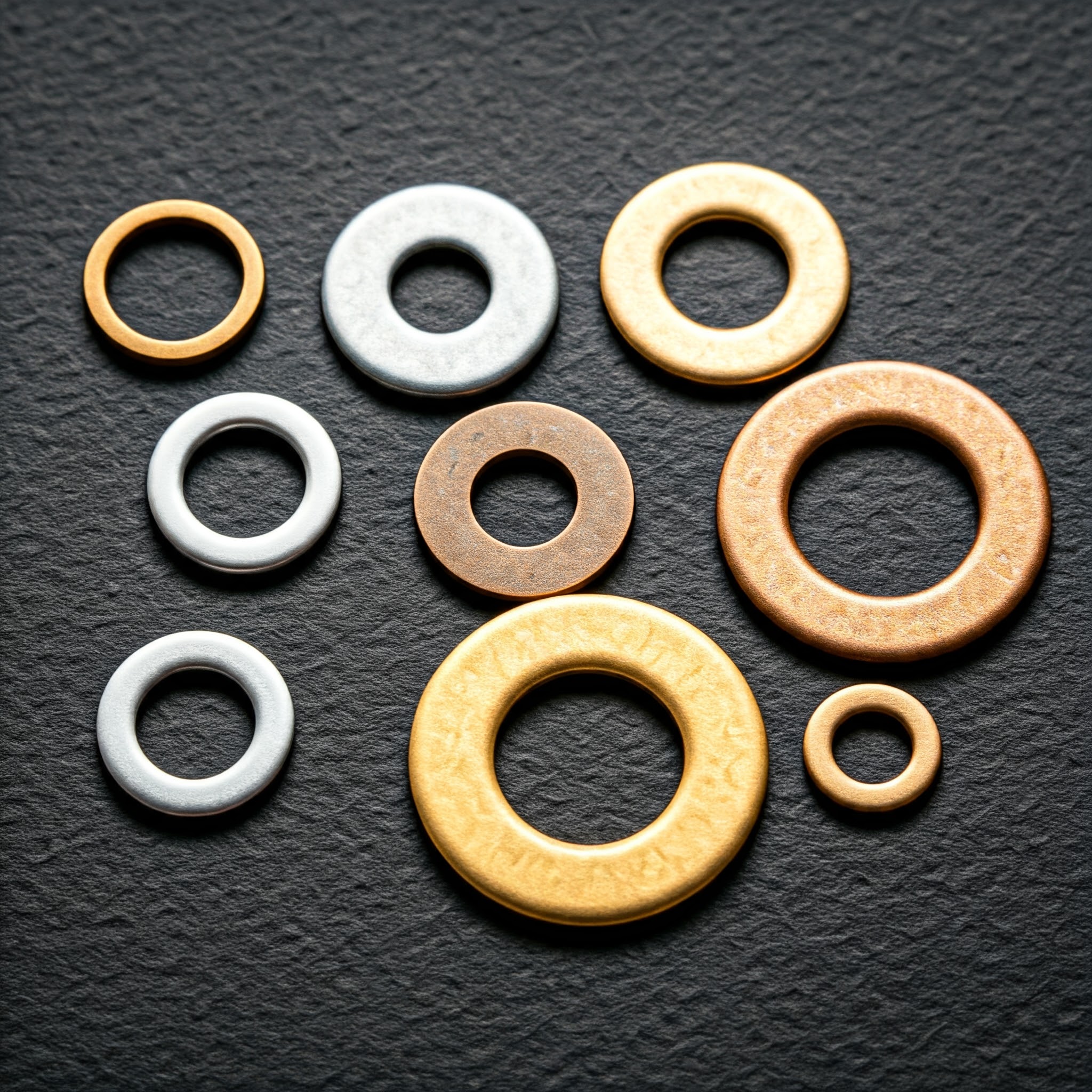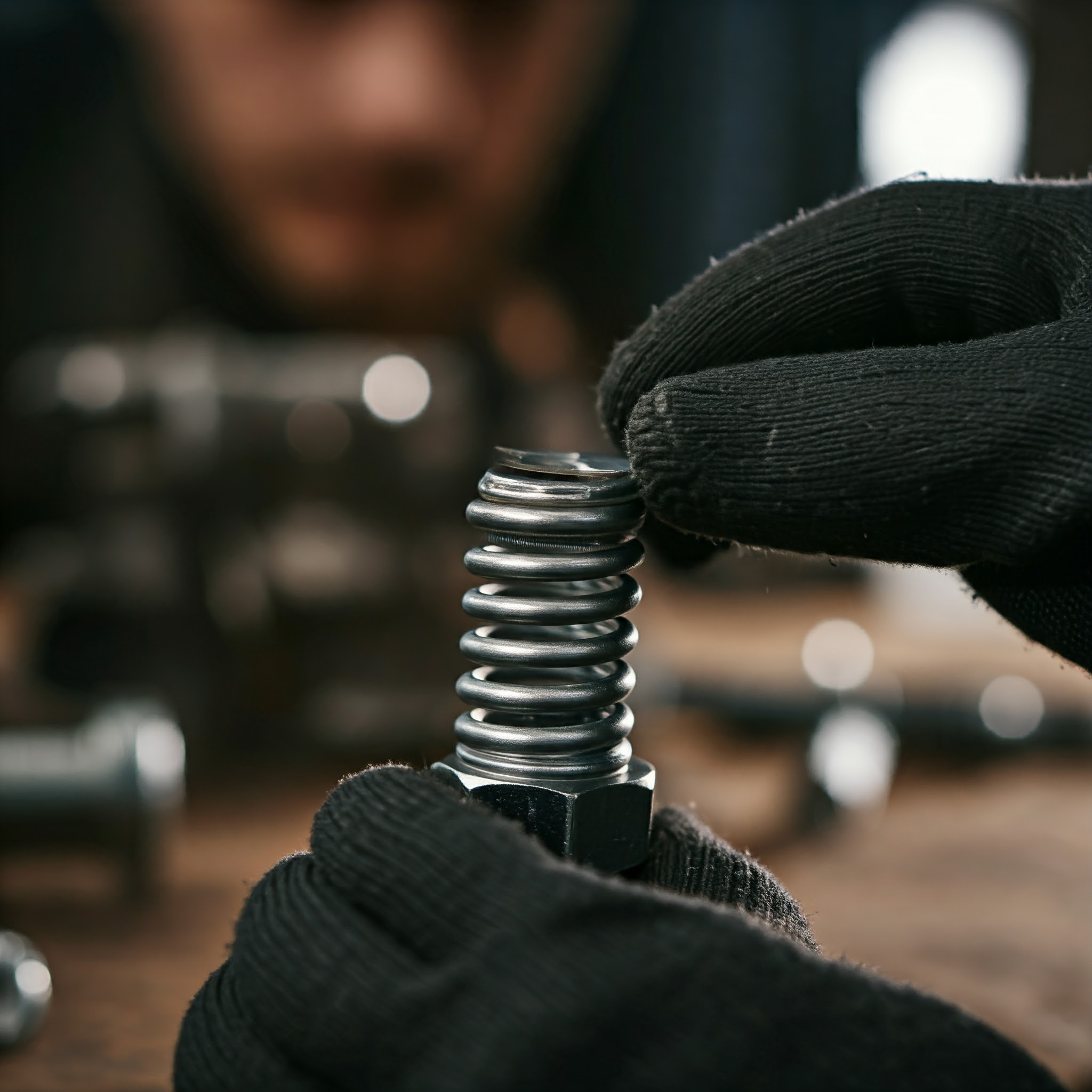How to Properly Install spring lock washers for Maximum Performance

If you're relying on spring lock washers to keep your machinery secure, it's essential to
install them the right way. While these washers are incredibly effective, improper
installation can diminish their performance and even lead to equipment failure. The key to
achieving the best results is understanding the installation process and paying attention to
small details. Here’s a guide to ensuring your spring lock washers are doing their job to
the fullest.
Table of Contents:
- Why Installation Matters for Spring Lock Washers
- Step-by-Step Guide to Installing Spring Lock Washers
- Choosing the Right Tools for Installation
- Common Mistakes to Avoid During Installation
- Importance of Torque Specifications for Spring Lock Washers
- How to Check if spring lock washers are Properly Installed
- Long-Term Washer Performance
- Final Thoughts: Keep Your Fasteners Tight and Secure
Why Installation Matters for Spring Lock Washers
Proper installation of spring lock
washers is crucial to ensure they perform effectively. These washers are
designed to resist loosening from vibrations and pressure, but if not installed correctly,
they may fail. Incorrect installation can lead to equipment malfunction, safety risks, or
costly repairs. Here’s what you need to keep in mind when installing spring lock washers for
machinery:
Key Considerations
- Engage the Washer's Spring Action: Make sure the spring lock washer's spring
action is fully engaged to apply consistent pressure to the fastener. If the washer
isn’t properly positioned, it won’t work as intended, leading to fastener failure.
- Align the Washer Correctly: Ensure the spring lock washer is centered on the
fastener. Misalignment can cause uneven pressure, reducing its effectiveness and leading
to loose fasteners over time.
- Use the Right Size and Material: Choose the correct size spring lock washer for
your fastener and the right material for the environment (e.g., stainless steel spring
lock washers for corrosion resistance in outdoor applications). This will ensure
long-lasting performance, especially in high-vibration settings.
- Apply Correct Torque: Tighten the fastener to the recommended torque to avoid
under-compression or over-tightening, both of which can impact the washer’s performance.
Proper torque for spring lock washers prevents premature failure and ensures secure
fastening.
By following these steps, you’ll reduce the risk of loose fasteners and increase the
longevity of your equipment. Proper installation of spring lock washers for heavy-duty
applications ensures the washer works effectively, improving safety and preventing premature
failures.
Step-by-Step Guide to Installing Spring Lock Washers
Installing a spring lock washer is a simple yet vital task to ensure the longevity and performance of your fasteners. Here’s a detailed guide on how to install them properly:
- Step 1 Clean the Surface: Before you begin, make sure the surface of the bolt and the area where it will be mounted are clean and free from any contaminants like dirt, grease, or rust. This ensures a firm grip and prevents any slippage of the spring lock washer during installation, improving overall performance. For best stainless steel spring lock washers for industrial use, it's essential to ensure clean surfaces to enhance their functionality in heavy-duty applications.
- Step 2 Position the Washer Correctly: Position the spring lock washer under the bolt or nut, ensuring that the split part of the washer is facing upwards toward the fastener. The correct orientation is crucial because the split section is where the spring tension works to resist loosening. Misalignment may reduce its effectiveness in securing the fastener. When deciding how to choose the right spring lock washer for heavy loads, make sure the washer’s material, like high-tensile spring lock washers for vibration resistance, is suitable for the specific load-bearing requirements of your application.
- Step 3 Tighten the Fastener: Use the correct tool to tighten the fastener. Be sure not to overtighten, as excessive force can damage the spring lock washer, causing it to lose its tension. Always refer to the recommended torque specifications to avoid over-compression or failure of the washer. When you're considering spring lock washer vs flat washer – which is better for fastening, remember that spring lock washers are ideal for preventing loosening under pressure, while flat washers provide stability but lack the self-locking mechanism.
- Step 4 Check for Proper Fit: Once the fastener is secured, inspect the spring lock washer for a proper fit. It should be snug and aligned with no signs of wobbling. If the washer is overly compressed or distorted, it may no longer function effectively and should be replaced to ensure secure fastening. For best corrosion-resistant spring lock washers for marine applications, ensure they fit tightly without distortion for long-lasting use in harsh environments.
By following these steps, you’ll ensure that the spring lock washer works optimally, providing reliable resistance against loosening and ensuring the longevity of your mechanical systems. For specialized needs, you can find top suppliers of custom spring lock washers in India that can provide tailored solutions for various applications, from industrial-grade spring lock washers for heavy machinery to spring lock washers for marine environments.

Choosing the Right Tools for Installation
The right tools can make the installation process easier and more effective. Here’s what you’ll need:
- Torque Wrench: This will ensure you tighten the fastener to the correct specification, avoiding both over- and under-tightening.
- Socket Wrench or Impact Wrench: These are essential for getting the necessary torque to secure heavy-duty fasteners.
- Clean Cloth: To clean the surfaces before installation.
Using the right tools will not only improve the washer's effectiveness but will also save you time and effort.

Common Mistakes to Avoid During Installation
Even seasoned engineers can make installation mistakes. To ensure you're getting the most out of your spring lock washers, avoid these common pitfalls:
- Incorrect Washer Orientation: Installing the washer with the wrong side facing the fastener can prevent it from working properly.
- Over-Tightening the Fastener: While it's tempting to tighten bolts as much as possible, over-tightening can flatten the washer and reduce its effectiveness.
- Using an Incompatible Washer Size: Make sure the washer fits the size of the bolt or nut. If it's too small or too large, it won’t perform its job correctly.
- Skipping the Washer: Some people skip the washer altogether, assuming the bolt alone will hold. This can lead to loosening due to vibration or thermal cycling.
Importance of Torque Specifications for Spring Lock Washers
One of the most critical aspects of installing spring lock washers is adhering to the correct torque specifications. Each type of washer and fastener requires a specific amount of torque to work properly. Over-tightening can cause the washer to lose its spring tension, while under-tightening can result in insufficient grip.
How to Check if spring lock washers are Properly Installed
After installation, it’s important to verify that everything is correctly in place. Here’s how you can check:
- Visual Inspection: Make sure the washer is aligned properly with the fastener and that it’s not deformed.
- Torque Test: After installation, recheck the torque to ensure it matches the recommended values.
- Movement Test: Gently move the connected parts to check if there is any unwanted play or loosening. If the fastener stays in place, the installation was successful.
Long-Term Washer Performance
To get the most out of your spring lock washers, consider these long-term maintenances:
- Regular Inspections: Check the washers periodically for signs of wear or corrosion.
- If the washers show signs of compression, rust, or deformation, replace them immediately.
- Use Anti-Corrosion Treatments: In harsh environments, consider applying coatings or using corrosion-resistant washers to prolong their life.

Final Thoughts: Keep Your Fasteners Tight and Secure
When it comes to heavy-duty applications, ensuring that your fasteners stay tight and secure is crucial to the integrity of your machinery. Proper installation of spring lock washers
is a simple but effective way to prevent loosening caused by vibration, thermal cycles, and other stresses. By using the right spring lock washers from trusted suppliers like Sachinshim, you can be assured of high-quality, corrosion-resistant washers for long-lasting performance.
By following the steps above, choosing the right tools, and avoiding common mistakes, you can ensure that your spring lock washers provide maximum performance, keeping your machinery safe and operational. Sachinshim offers a wide range of custom spring lock washers and industrial-grade fasteners that are specifically designed to meet the needs of your critical applications, ensuring your assemblies remain secure under heavy loads.
Ready to upgrade your fastening game? Make sure you’re installing spring lock washers the right way, and enjoy the peace of mind that comes with knowing your assemblies are secure. For the best spring lock washers tailored to your needs, visit Sachinshim and explore our extensive selection of high-quality washers and fasteners.
About Sachin Shim
Our range of shim washers includes machined washers , industrial washers , ogee washers , tab washers , conical washers , sealing washers , and more. Designed for various applications, they ensure precise alignment, secure fastening, and durability in industries like aerospace, automotive, construction, and manufacturing. Whether you need industrial washers for heavy machinery, sealing washers for fluid systems, or ogee, tab, and conical washers for specialized uses, our selection guarantees optimal performance.
Author
Meet Seema, our expert author in industrial materials with a deep understanding of
Bolts. With years of experience, Seema brings valuable insights and expertise to
this guide, making them a trusted source for all things related to Bolts. Join us as
we delve into the art of Bolts with Seema leading the way.
List Other similar blogs







